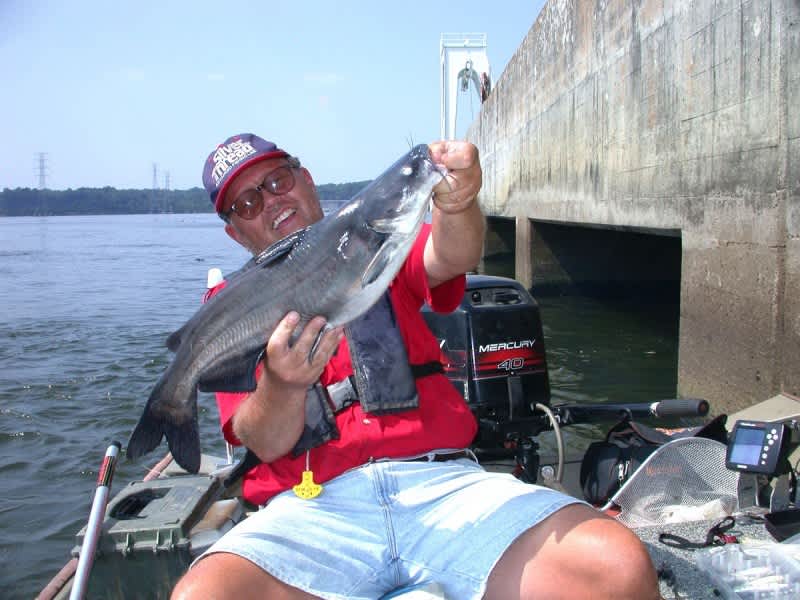How to Catch Hot Catfish Now
John E. Phillips 07.28.14

Attention, anglers: with enough effort, you can catch plenty of hot-weather catfish right now. You’ll encounter very little fishing pressure on catfish at this time of the year, because most catfishermen are hugging their air conditioners and drinking glasses of ice-cold sweet tea. Your best information on where to catch the most cats where you want to fish is to contact the state fisheries biologist who oversees that area. Here are some places you almost always can find Mr. Whiskers now.
Tailraces
When current is being pulled through the lake and is used to run hydroelectric power plants, the coolest water from the lake above comes out at the generator discharges in the tailrace below a dam. This cool water also contains ground-up and injured shad from the lake above, and discharge water will concentrate shad and other bait fish. Where two colliding currents from two different discharge points come together, they create slack water, often called “grooves”. By keeping your outboard running and holding your boat against the current so that it slowly moves down those grooves, you often can load your boat with catfish on your rod and reel.
Tie a three-way swivel on your main line. On the second eye of the swivel, attach 12 to 18 inches of 10-pound monofilament and a catfish hook (this can vary depending on the size of the cats you’re catching, but generally a No. 1 hook works). On the bottom eye of the swivel, tie 12 inches of 10-pound-test line with a sinker heavy enough to get your line to the bottom. Bait with live or dead shad, worms, chicken livers, spoiled shrimp, or any other type of catfish bait. As you slowly drift down the current, bump the bottom, and catch the cats.

Jugs or noodles
Fishing with jugs or noodles in the dam area off the current can also be highly productive. Oftentimes a back current will occur where water is flowing from the hydroelectric plant discharges back to the spillways of the dam. By tying lines to jugs or noodles and letting those floating catfish catchers move with the back current toward the dam, you may locate a catfish bonanza, perhaps catching 20 to 30 catfish in less than two hours.
Dams by starlight
Even after dark when there’s no current coming through the dam, there’s numbers of cats waiting to be caught in the tailrace area. Once the power plant shuts down, and the flow of current stops, the coolest water that’s the most oxygenated and contains the most bait for catfish will still be near the dam. Jug fishing, as well as hook and line fishing, will be productive around rocks and along the base of the dam and the hydroelectric plant.
Creeks—a sure bet
Although creeks and streams may be at their lowest levels during August and September, they still will have holes in their bottoms and drop-offs below shoals. By using a portable depth finder, you can pinpoint these depressions in the bottom and mark them as waypoints on your handheld GPS receiver to catch catfish below shoaling areas and in holes in the bottom of that cool water. Also, small moving streams bring baitfish down the current and deposit them either in the holes or right above the holes where the catfish can see and eat them. You can use live bait or dead bait to fish these small rivers, creeks, and streams with moving water successfully at this time of year.
Bait will lead you to the cats
At certain times of the year, catfish will go on a feeding spree. When the willow flies hatch at the 652-mile-long Tennessee River, any place you see a large concentration of willow flies, you can catch cats. When the shad spawn occurs in the summer, if you can locate where the shad are spawning, you can catch cats there too. Anywhere timber is standing out in a lake, and a large group of cormorants are roosting in those trees, you can catch catfish at their bases, because the cormorants’ droppings attract baitfish, which will in turn draw in catfish.
You can catfish this month and fill your freezer with delicious fillets.
For more tips and information on catching catfish, check out the ebook or print copy of John E. Phillips’ book, Catfish Like a Pro.

